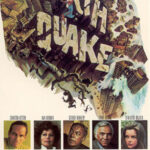I remember the day, August 31st, 1986, like it were yesterday. It was a hot day. It was a weekend day, and I had spent the entire weekend with my dad and stepmother at their condo in Santa Fe Springs, California. I remember sitting in the living room just flipping through the stations on the television. After selecting a suitable program to watch, it was only a few minutes later that a special news bulletin interrupted my program with a special bulletin about a plane crash in Cerritos.
Immediately, the screen was filled with images of smoke, fire, emergency vehicles and utter chaos engulfing this quaint suburb of Los Angeles. I was in disbelief. I called out to my dad who quickly joined me in watching the events unfold on the television screen. I lived in Cerritos then, as I do now. Cerritos was my home where my mother and stepfather lived and where I lived when I wasn’t away visiting my dad on weekends.
The funny thing is, I had no thoughts of fear or doom concerning the welfare of my mom and stepfather or any of my neighbors and friends. I was still trying to digest the shock of having an airplane crash into our small city. As the newscast continued, the location of the crash was determined, and it was not in our neighborhood but roughly two miles east. I knew my family and street and neighbors were safe.
As more information became available, it was determined that not one, but two, airplanes had crashed into Cerritos. The first plane was a large commercial jetliner – an Aeromexico DC-9 – that was headed for Los Angeles International Airport – roughly twenty-miles west of Cerritos. The second plane was a small four-passenger Piper Cherokee that was en-route to Big Bear Lake, a local resort town in the nearby San Bernardino Mountains.
pparently, the pilot of the small Piper Cherokee violated its air space constraints and ventured into the flight path of oncoming commercial jetliners headed towards Los Angeles International Airport. The reason for this breach of airspace protocol has been a subject of much debate. Upon a medical examination and autopsy of the Piper Cherokee pilot’s body, it was determined that he had advanced arteriosclerosis – or heart disease – that might have resulted in his suffering a heart attack at his flight controls, which resulted in his aircraft flying out of its authorized airspace and colliding with the Aeromexico jet.
Others believe that pilot error was to blame; that the Piper pilot simply was not aware of his surroundings and did not realize his position in relation to the incoming commercial jetliner traffic. One thing is clear: the pilots of the Aeromexico DC-9 airplane were not at fault. They were in proper position and at the prescribed altitude for their landing. It wasn’t until a few moments before the two planes collided that the Aeromexico pilot, suddenly aware of the dire situation about to unfold, was heard, as evidenced by the cockpit voice recorder, saying “oh, this can’t be!”
Evidently, the crash was implemented when the small Piper Cherokee clipped the tail assembly of the Aeromexico jet. The Piper aircraft was approaching from a side position, a position that made it hard for the Aeromexico pilots to see it, and crashed right into the tail, thereby disabling the pilots ability to control the Aeromexico jet. I remember a picture that was taken by a Cerritos resident who managed to take a picture of the Aeromexico jet falling out of the sky. It was such an ominous, sad thing to see.
The plane was virtually nose down; falling through the sky as smoke and fire billowed out from the rear of the plane. To think of the passengers and crew members aboard that plane in those last few seconds of their lives as their plane was spiraling towards the ground; it’s almost too much to conjure. On the ground, there were four houses that were completely destroyed and many other houses with extensive damage. A total of eighty-two people perished in the crash that day. Fifteen people were killed on the ground; all sixty-four people aboard the Aeromexico jet perished, as well as all three passengers aboard the Piper Cherokee.
In the aftermath of the crash, much fault was placed on the air traffic control system as a possible contributor to the events of that tragic day. On the day of the crash, the skies above and around the Los Angeles Airport area were overloaded with planes; air traffic controllers were overloaded to the max trying to maneuver all of the incoming and departing planes around each other. Much work was done in the aftermath of the crash to overhaul and improve the air traffic control system.
Los Angeles International Airport added more air traffic controllers and added improved radar systems to their air traffic control system. As a direct result of the Cerritos crash, all commercial airplanes were mandated to have Collision Avoidance Systems(CAS), something that was lacking on the Aeromexico jetliner on the day of the crash. This system, which alerts the pilots of approaching aircraft that are dangerously close, would have alerted the Aeromexico pilots to the fast-approaching Piper Cherokee and, quite possibly, would have averted the dire events of that day.
It’s been over twenty-years since that August day in 1986. The city of Cerritos has erected a memorial plaque as a monument to those who lost their lives on that horrific day. In the neighborhood in which the planes ultimately fell to the ground, there is no sign or reminder of the events of that day. Life has gone on and the neighborhood is once again filled with playing children, barking dogs, and the buzz of city life.




